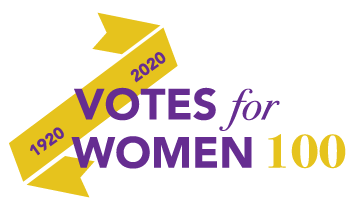Path to the Vote

Works Consulted
The Woman’s Hour: The Great Fight to Win the Vote. Elaine Weiss. Penguin Books, 2019.
Why They Marched: Untold Stories of the Women Who Fought for the Right to Vote. Susan Ware. Belknap Press of Harvard University Press, 2019.
Sojourner Truth’s America. Margaret Washington. University of Illinois Press, 2009.
“Declaration of Sentiments.” Elizabeth Cady Stanton. Report of the Woman’s Rights Convention, Held at Seneca Falls, New York, July 19 and 20, 1848. Printed by John Dick, Rochester, NY, The North Star office of Frederick Douglass, 1848.
The History of Woman Suffrage. Elizabeth Cady Stanton, Susan B. Anthony, and Matilda Gage. Vol. I: 1835-1860. New York, Fowler & Wells, 1881.
Lucretia Mott. Diary of Her Visit to Great Britain to Attend the World’s Anti-Slavery Convention of 1840. Edited by Frederick B. Tolles, supplement no. 23, Journal of the Friends’ Historical Society. Friends’ Historical Association and Friends’ Historical Society, 1952.
Crusade for the Vote. Online exhibit and resource. National Women’s History Museum.
Shall Not Be Denied: Women Fight for the Vote. June 4, 2019 – Sept. 2020. The Library of Congress, Washington, D.C.
Votes for Women: A Portrait of Persistence. March 29, 2019 January 5, 2020. National Portrait Gallery, Washington, D.C.
Liberty Awakes in Washtenaw County: When Women Won the Vote. Jan. 8 – Feb. 27, 2011. The Museum on Main Street, Ann Arbor, sponsored by the Ann Arbor Area League of Women Voters.
Women’s History Timeline, The Michigan Women’s Historical Center and Hall of Fame, Lansing, MI.
National Park Service. Women’s History Website, “19th Amendment,”, and “Suffrage in America: The 15th and 19th Amendments” series. https://www.nps.gov/subjects/womenshistory/15th-and-19th-amendments.htm
“US Voting Rights Timeline,” Northern California Citizenship Project. https://www.nps.gov/subjects/womenshistory/15th-and-19th-amendments.htm
“Who got the right to vote when? A History of Voting Rights in America” AlJezera.
Image Sources
William L. Clements Library Image Bank, University of Michigan.
Bentley Historical Library Image Bank, University of Michigan.
Library of Congress, Prints & Photographs Online Catalog.



